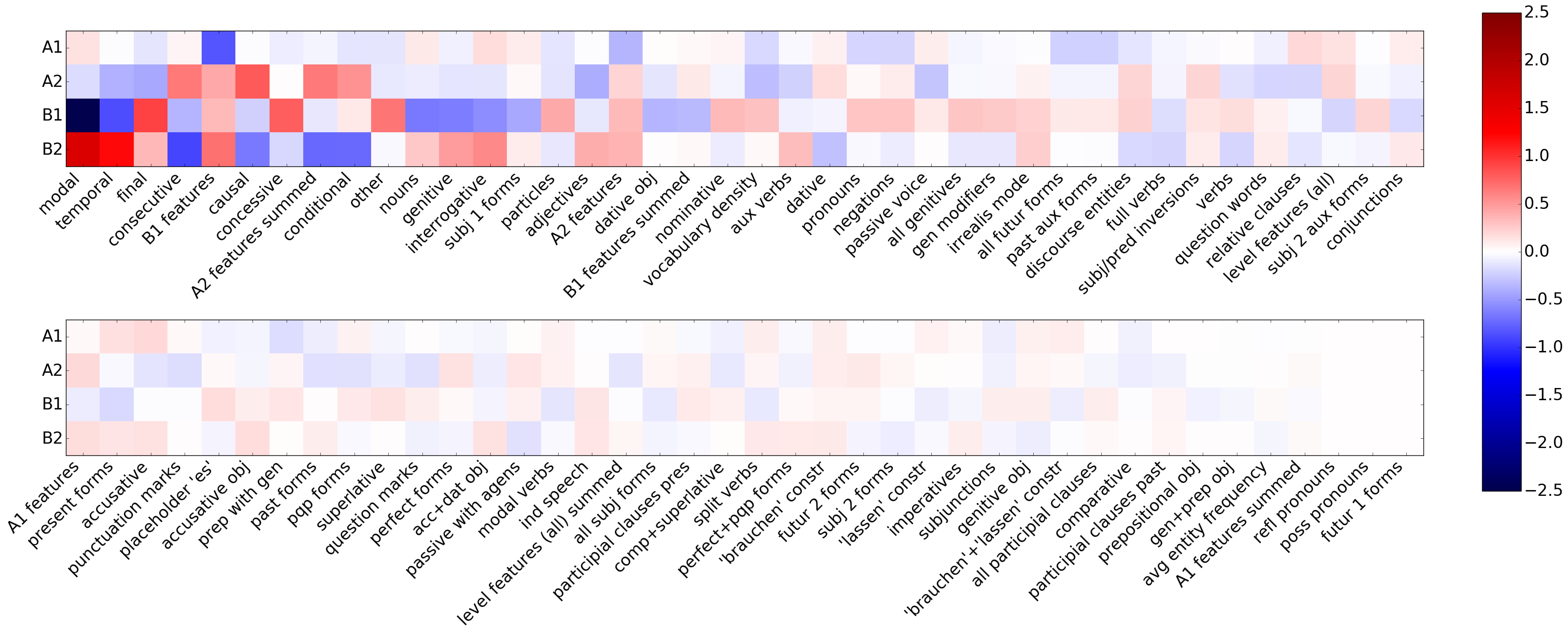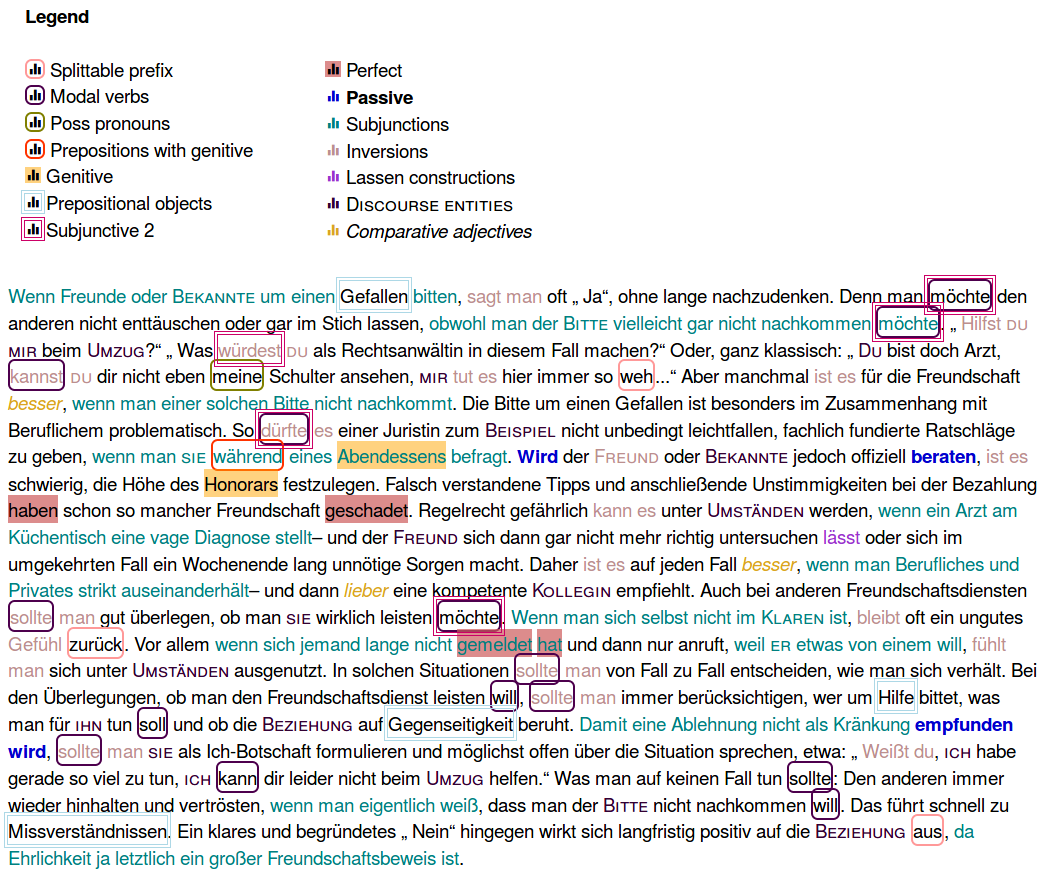lang-level is a tool for identifying linguistic constructions and characteristics in order to determine the German language level of the writer (or target reader).
Experiments with a linear support vector classifier trained on these features demonstrate that this approach is fit for assigning language levels to unseen texts.
The 80 manually designed language level features include information about part-of-speech, tempus, mode, use of subjunctive clauses, or passive voice. The tool returns information about the frequency of occurrence of these linguistic features, which can be used for numerically analyzing texts. It also provides an option for visualizing the results by highlighting the features interest for any given text.
The 01_Text_collections folder contains small corpus of German text samples for levels A1 to B2. The language level features are computed for each sample and used to train and evaluate a linear support vector classifier for the four different language levels, reaching an accuracy of 85%.
After investigating the feature sparsity and relevance (computed by the coefficient strength), weaker features are merged by means of feature agglomeration in order to reduce feature space. This raises the performance to 93% accuracy.
The features also proved suitable for author classification on literary works. For more information, please consult the reports.
The system was implemented in Python 3.7 and Jupyter Notebook 6.0.0 and and tested under Ubuntu Linux, but it should work under other environments which have the Python 3 installed (no guarantee).
The text collection provides pre-parsed versions for both the language level and literary work datasets so you do not need to install the parser. For full functionality, however, please install ParZu and CorZu and adjust the path in the config file.
Alternatively, you can use another dependency parser for German with CoNLL output format and enter its parsing output instead of raw text.
The folder 01_Text_collections contains two datasets: the language level set and the literary work set. The language level set consists of 264 texts for German language learners for levels A1 to B2. They were extracted manually from the web. Please look up the source websites in the report.
The literary work set contains text samples with a length of 50 sentences each for 20 different authors, with a total of 7365 samples. The texts were extracted from Project Gutenberg.
If you are using ParZu and CorZu, please correct the path in config.py .
The folder 03_Text_features already contains all the features used for the experiments described in the reports. If you want to run the feature extraction again, select version and output directory in the script RUN_feature_extraction.py and execute with Python 3.
If you want to adjust or add language level features, make changes in language_level_feature_extraction.py.
The Jupyter Notebook Feature_Visualization.ipynb presents a simple visualization tool for coloring specific linguistic characteristics in any given German text.
The Jupyter notebooks
- Playground_Language_Level_Classification.ipynb and
- Playground_Language_Level_Classification_Feature_Agglomeration.ipynb_
- Complete_Language_Level_Classification_with_Feature_Agglomeration.ipynb
demonstrate how to use the 80 extracted features for training a classifier. They also show how to identify sparse and less relevant features and how to use feature agglomeration for merging similar features in order to reduce the feature space.
Note that the performance results described and discussed in the reports may vary slightly from the ones computed with these scripts due to minor changes and updates. However, the relations in performance between the different experiments follow the same trends.
If you have any questions, please do not hesitate to contact me by email.

